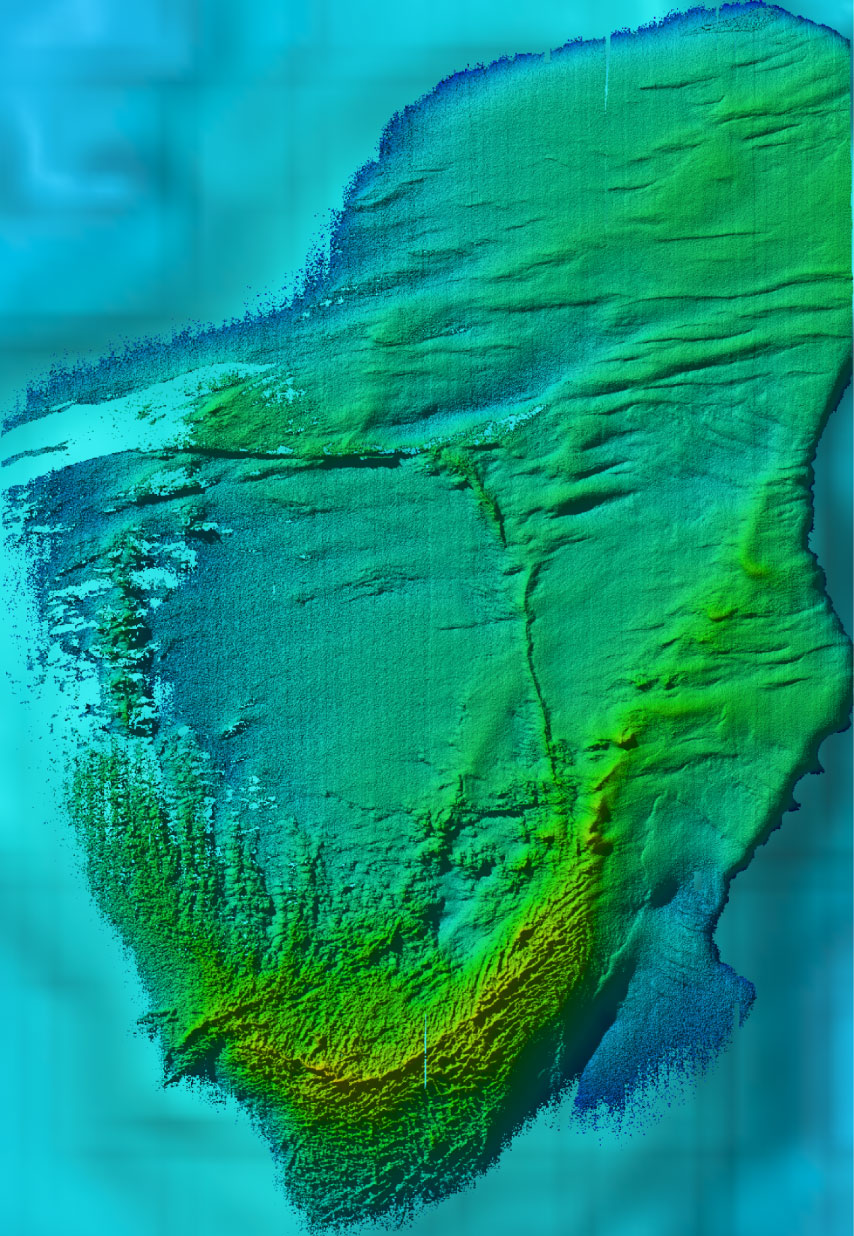Boulder Reef
Figure 2.1 - Shaded relief map of Boulder Reef, N. Lake Michigan. The
rough relief in the southern, and shallowest, portion of the reef is covered
with gravel, cobbles and boulders (Fig 2.2,
Edsall et al., 1989 and video data) with rare patches of sand. The coarse
bottom material is roughly organized into a boxwork of highs and lows
less than a meter high. The arcuate ridge at the south end of the reef
is likely a remnant depositional glacial feature from a small lobe of
ice moving from the north. The coarse texture material extends to beyond
the depths of the survey to the west and south, but transitions to a sand
substrate to the east and north. (Video observations by Greg Kennedy,
personal communication) The strong east west lineations in depths of 15-20
m in the northern half of the image could be related to either glacial
movement but this is transverse to movement suggested by the ridge to
the south, or to older glacial events or to the extrapolated underlying
Devonian, Bois Blanc Formation (Fig.1). These lineations are drapes overlain
by sediment (sand with smooth) morphologies. Clean sand was sampled in
this part of the ridge. Underwater observations of Somers (1968) reports,
"till generally is covered with sand, gravel, cobbles or boulders"
from a dive near the south end of this reef. Note: The faint N-S lineations
seen in the central part of the image are artifacts of the data gathering
flight lines. |
